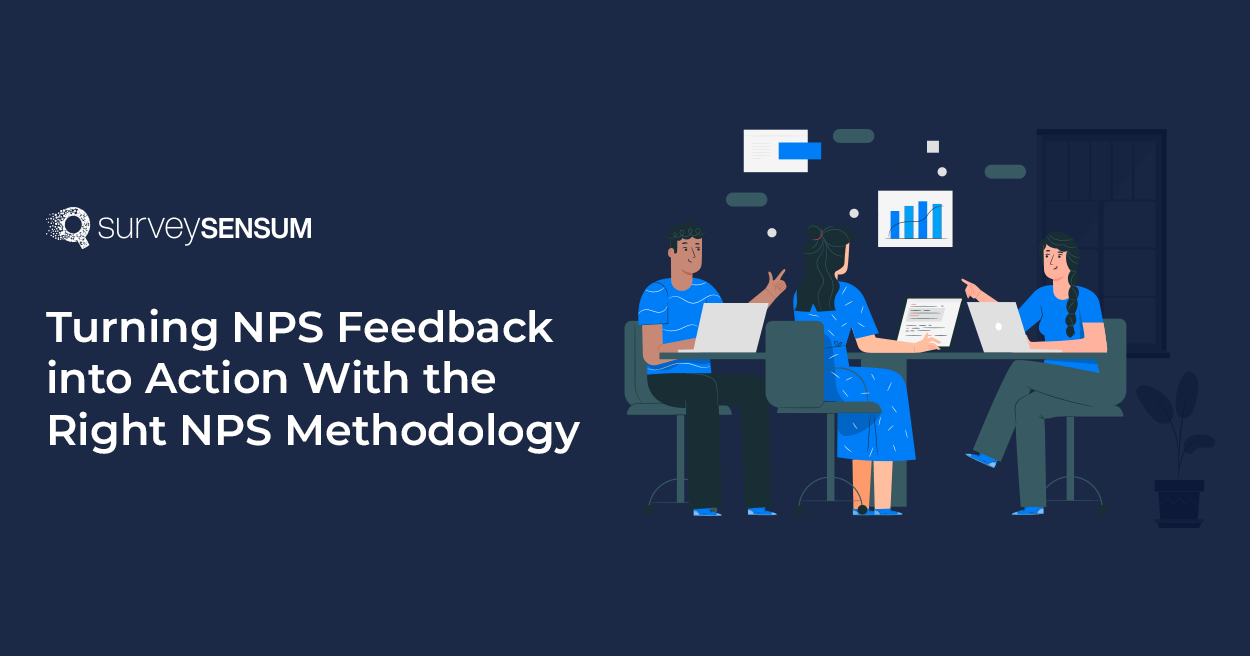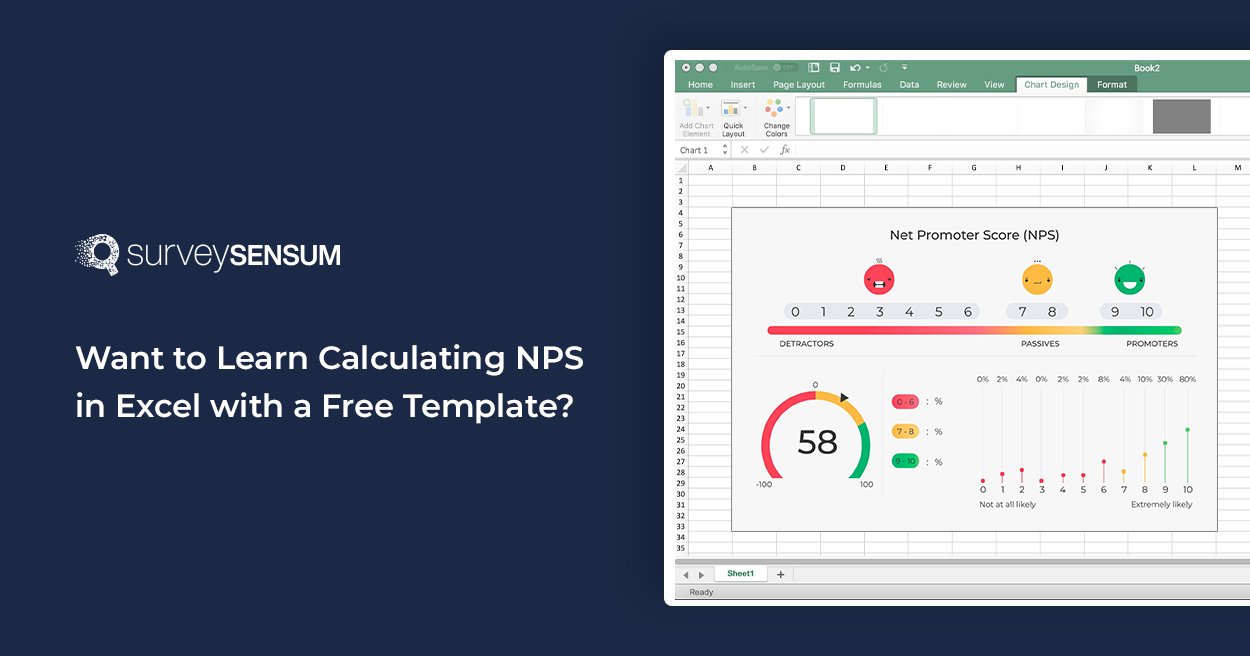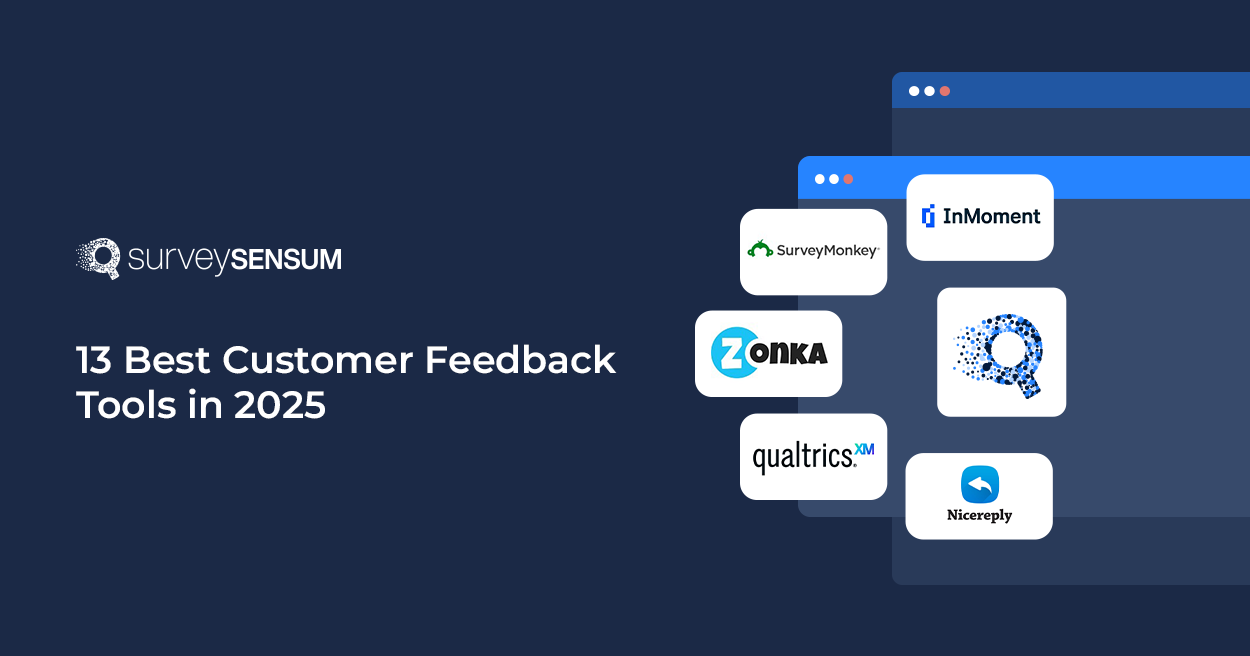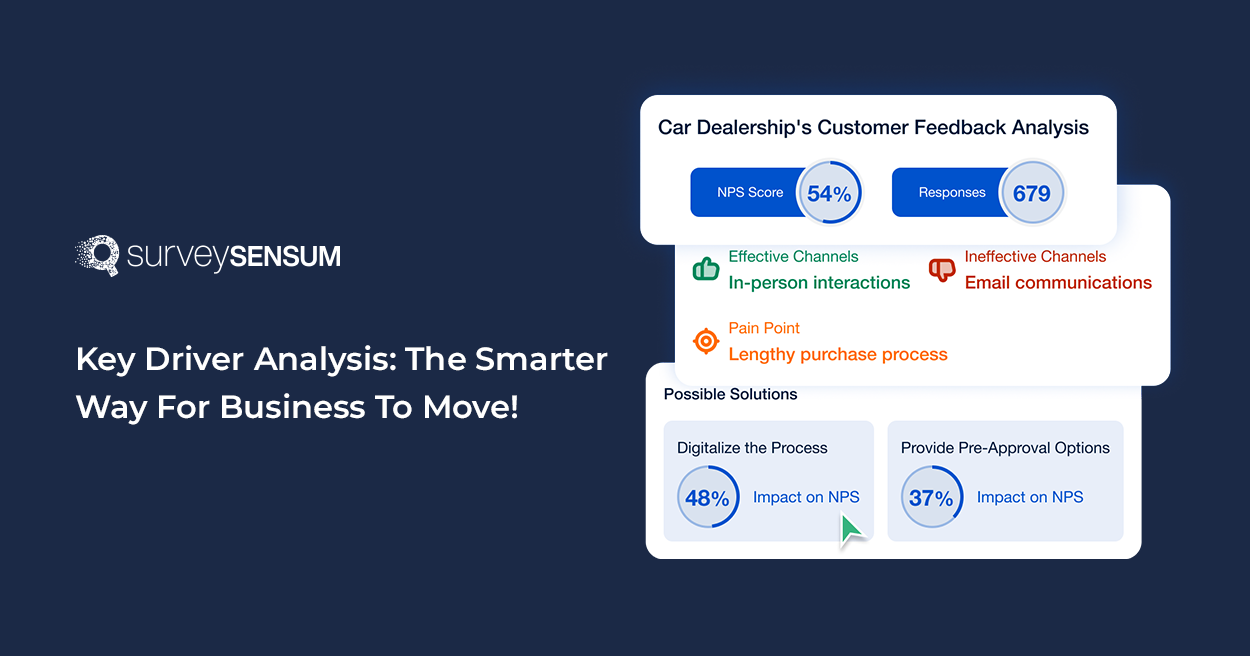
Bakery A and Bakery B competed to improve customer satisfaction. They both launched NPS surveys to assess and enhance overall satisfaction and loyalty. Bakery A didn’t uncover any useful feedback, but Bakery B discovered customers were unhappy with the limited dine-in cake options.
Weeks later, Bakery B attracted more customers, including some from Bakery A.
What changed?
They both conducted similar NPS surveys, launched simultaneously, and analyzed the data using the best NPS software. So, what set Bakery B apart?
Well, Bakery A didn’t follow a proper process and made the mistake of crafting the wrong question and asking it to the wrong customers. But Bakery B followed the right methodology, got valuable feedback, and took immediate action to ensure that customer complaints were resolved. As a result, they improved their customer experience, retained their lost customers, and also gained new customers.
This shows that creating and launching an NPS survey is the first step, but turning the feedback into an action plan is what makes the difference and sets you apart from your competitors.
But more often than not, businesses fail to get maximum value from their NPS feedback. The challenges here are multifaceted – businesses might not be asking the right questions at the right interaction or not allocating the right resources.
This makes knowing the right process to turn NPS feedback into actionable goals, all the more important. So, with this blog, we will delve deeper into the right NPS methodology that will help you turn your NPS feedback into action.
What is NPS?
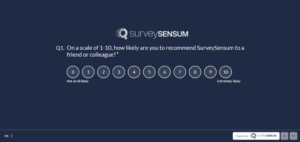
NPS is a widely used metric for measuring customer loyalty and satisfaction. It is based on a single question that asks customers to rate their likelihood of recommending a company’s product or service to others. The core NPS question is:
→ ‘On a scale of 0 to 10, how likely are you to recommend our product/service to a friend or colleague?’
But Why is NPS Important?
Its importance lies in the fact that
- It is a simple survey that makes it easy for customers to respond, and for businesses to interpret and act on the feedback.
- It assesses customer loyalty, which is closely linked to customer retention and advocacy.
- It allows companies to compare their performance to industry benchmarks or competitors.
- Historical NPS data helps track trends in customer satisfaction over time.
- It includes open-ended comments, allowing customers to provide specific feedback.
- It is quick to create and helps you segregate respondents based on feedback.
Now, that we know what NPS is and why is NPS important, let’s see the benefits of turning NPS feedback into action.
The Benefits of Turning NPS Feedback into Action
So, you have launched your different types of NPS survey, and analyzed valuable feedback, now what?
Take action. Otherwise, the whole process of your NPS strategy goes to waste.
But what are the benefits of doing so?
1. Positive Word of Mouth
By calculating your NPS score you can easily identify your promoters who are more likely to become brand advocates. They recommend your products/services to their friends, and colleagues, resulting in organic growth through positive word of mouth.
2. Increased Customer Retention
By calculating your NPS score, you also find your dissatisfied customers, aka detractors. Identifying and resolving issues highlighted by them in the NPS feedback can prevent customer churn, boosting your customer retention rates.
3. Enhanced Customer Satisfaction
When a business acts on the NPS feedback, it makes necessary improvements to its products, customer services, and overall customer experience. This leads to greater customer satisfaction, as their concerns and suggestions are addressed.
4. Competitive Advantage
Companies that actively listen to customer feedback and take action are often more competitive. They can stand out in the market as customer-centric businesses, attracting more customers who prefer brands that prioritize their needs and feedback.
So, these are the important benefits of incorporating NPS feedback into your action plan.
Launch Your First NPS Survey With SurveySensum
The Right NPS Methodology
Now, let’s talk about why using NPS feedback is such a big deal for business success. Here’s the thing, many businesses miss the mark when it comes to picking the right approach to put that NPS feedback into action.
It’s like leaving a pile of gold untouched! They end up missing out on valuable insights and don’t make the most of what NPS feedback can offer.
And this is why we have provided you with this step-by-step guide to the right NPS methodology.
Step 1: Collect NPS Feedback Regularly
The first step in your NPS methodology should be to collect the feedback the right way.
Craft the Right NPS Survey Question
When you plan on launching a survey, what is the first step you need to take?
Crafting the right survey question.
So, when it comes to the NPS survey, we all know the standard NPS scale question to ask here is
→ ‘On a scale of 0 to 10, how likely are you to recommend our product/service to a friend or colleague?’
But this is not the only question to ask in an NPS survey.
For example, you can ask questions about different aspects of your business such as customer support, your B2B product, your website or app, retail, etc.
→ ‘On a scale of 0-10, how likely are you to recommend us to friends and colleagues based on the quality of our product?’
These questions will help you gauge customer satisfaction and loyalty based on the different interactions with your business.
The important point here is to remember to keep your questions straightforward and easy to understand.
When and Where to Send Your NPS Survey?
You prepared the right NPS survey questions that match your survey objective, now the next step is to understand when and where to send your NPS survey.
There are two ways businesses can distribute their NPS survey to get the maximum value out of it – tNPS and rNPS. Let’s understand them.
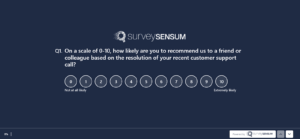
For tNPS, you send the survey immediately after a specific transaction or interaction, with the aim of capturing feedback related to that particular experience.
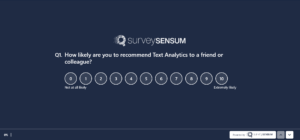
For rNPS, you send the survey at regular intervals, ideally, every 6 months, to assess the long-term, overall relationship and loyalty of your customers.
Based on your survey objective, you can choose any of the NPS survey types and send your surveys accordingly.
Note: Since NPS is a loyalty metric, it takes time to build a relationship with the customer. That’s why we recommend to only use Relationship NPS survey and not the Transactional NPS Survey. If you want to gauge transaction satisfaction, the right metric would be CSAT.
Tracking your NPS Score Over Time
Historical NPS data allows you to assess the performance of your business over time. By comparing NPS scores from different periods, you can identify trends and determine if your efforts are positively or negatively affecting customer loyalty.
For example, you conducted an NPS survey 6 months ago for your retail store, which revealed that most customers were unhappy about product availability. You addressed the issue and now, 6 months later, you’re planning a new NPS survey. Before diving into the new survey, take a moment to assess the impact of your previous efforts. Are customers satisfied now? Do they feel the problem is resolved? This step helps you gauge the actual impact of your efforts on improving the customer experience.
How to Increase Survey Response Rates?
The next big challenge with launching NPS surveys is to explore strategies to increase survey response rates. Here are some effective ways to boost your NPS survey response rates:
- Keep your surveys short and simple. Respondents prefer surveys that take 5-7 minutes to finish.
- Clearly explain the purpose of the survey and why the respondent’s input is valuable.
- Distributing your survey through multiple channels like emails, WhatsApp, etc.
- Send surveys at appropriate times. For example, if it’s a transactional survey, send it shortly after the customer’s interaction.
- Ensure that your surveys are mobile-friendly as it makes it easier for customers to participate.
Now that you’ve launched the survey, and started gathering feedback, its time to analyze it.
Step 2: Analyze your NPS Feedback
You have collected your NPS data by launching your survey at the right time through the right channels, now the next step is to analyze it thoroughly to gather actionable insights. And in order to do that you need to calculate and understand your NPS score.

To calculate your NPS score, subtract the percentage of Detractors from the percentage of Promoters. The formula is NPS = (% of Promoters) – (% of Detractors).
Now, your NPS score is calculated on a scale of 0-10. To provide a more comprehensive understanding of your customer feedback, you can enhance this by color coding the NPS scale and segmenting your customers as follows:
- Promoters (9-10): They are highly satisfied, loyal, and likely to promote your brand to others.
- Passives (7-8): They may or may not actively promote your brand and are susceptible to competitive offers.
- Detractors (0-6): They are at risk of churning, and may even share negative feedback about your brand.
Now, this segmentation of your customers, based on their ratings, will help you gain a more nuanced understanding of their experience and target your efforts to address the specific needs and concerns of each group.
But, this is for customers who gave a definitive rating, but the NPS survey question also comes with an open-ended question.
How to Analyze Open-Ended NPS Feedback?
→ With Text Analytics Software
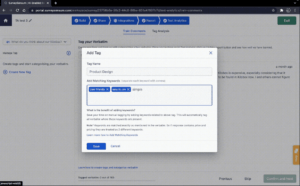
Use a robust text analytics software that will let you read between the lines. With SurveySensum’s text analytics software, you can analyze hundreds of open-ended responses and get top trends and sentiments within a few minutes.
All you have to do is create tags and incorporate relevant keywords for 15 responses. The AI-powered system will familiarize itself with the tags and autonomously apply them to responses, saving you time and effort. And with the report feature, you can find a detailed NPS analysis of which tags occur the most time and their sentiments.
This will allow you to dive deeper into the ‘why’ behind your NPS score. It will also provide valuable context and help you identify the root causes of customer satisfaction or dissatisfaction, guiding your efforts to enhance the customer experience.
Explore Text Analytics Software For Better Analysis
Step 3: Close the Loop With your Customers
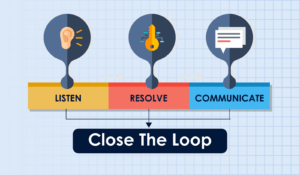
You have calculated, segmented, and analyzed your customer experience, now it’s time to take action and resolve issues. This step involves taking appropriate actions to further engage, retain, and satisfy your customers. Here’s how to effectively close the loop with different customer segments.
Responding to Promoters:
- Express Gratitude: Thank your promoters for their high NPS scores and for their loyalty to your brand.
- Encourage Advocacy: Request promoters to become advocates for your brand. Ask if they’d be willing to provide testimonials, or participate in case studies or reviews.
- Reward Loyalty: Consider offering exclusive promotions, loyalty programs, or special offers to promoters as a token of your appreciation for their continued support.
- Engage in Upselling/Cross-Selling: Identify opportunities to upsell or cross-sell additional products or services as they already love your brand.
Responding to Detractors:
- Acknowledge Concerns: Reach out to them promptly to acknowledge their feedback and express your understanding of their concerns.
- Apologize and Resolve Issues: Apologize for any negative experiences and take immediate steps to resolve their issues or complaints.
- Seek Feedback for Improvement: Encourage them to provide more details about their negative experiences. Ask for specific suggestions on how you can make improvements.
- Follow-up: After addressing their concerns, follow up with them to ensure that they are now satisfied with the resolution and that their overall experience has improved.
Responding to Passives:
- Engage for Feedback: Contact passives to better understand their experience. Ask for more details to uncover areas where they feel improvement is needed.
- Convert to Promoters: Address their concerns and show that you are committed to enhancing their experience.
- Customer Education: If passives seem to have misconceptions or misunderstandings about your offerings, provide clear and informative content to educate them.
Closing the loop with your customers can lead to increased customer loyalty, reduced churn, and improvements in your products, services, and customer experience. Tailor your responses and actions based on the unique needs and sentiments of each customer group to maximize the impact of your NPS strategy.
Close the Feedback Loop With SurveySensum
Step 4: Take Action on your NPS Feedback
Taking action on your NPS feedback is the core of the NPS process. and here’s how to effectively leverage NPS feedback in the important areas of your business.
Using NPS Feedback to Improve Your Products and Services
- Identify Key Themes: Analyze NPS feedback to identify recurring themes or common customer pain points related to your products or services.
- Prioritize Improvements: Determine which issues or areas for improvement are most critical to your customers and your business. Prioritize these for immediate action.
- Product Development: Align your product roadmap with the customer feedback and implement necessary changes.
- Continuous Iteration: Adopt an iterative approach, continuously seeking and incorporating customer input into your product and service improvements.
- Quality Assurance: Strengthen quality control processes to ensure that the issues highlighted in the feedback are minimized or eliminated.
Using NPS Feedback to Improve Your Customer Experience
- Map Customer Journey: Create customer journey maps to understand the end-to-end customer experience. Identify touchpoints where improvements can be made.
- Customer Feedback Integration: Embed NPS feedback collection at relevant stages of the customer journey to gather feedback in real time.
- Employee Training: Train and empower employees to provide exceptional service and address customer concerns effectively.
- Proactive Issue Resolution: Use NPS feedback to detect issues early and proactively address them before they negatively impact the customer experience.
- Personalization: Utilize NPS insights to personalize the customer experience by tailoring interactions and offerings to individual preferences.
Using NPS Feedback to Improve Your Marketing and Sales Efforts:
- Segmentation: Segment your customer base based on their NPS scores. Create targeted marketing campaigns and sales strategies for each segment.
- Refine Messaging: Adjust your marketing and sales messaging to reflect the feedback and preferences of different customer segments.
- Advocacy Programs: Encourage promoters to become brand advocates who can help with word-of-mouth marketing, referrals, and testimonials.
- Detractor Outreach: Develop strategies for reconnecting with detractors who have had their concerns addressed and converting them into satisfied customers.
- Feedback-Driven Content: Create marketing content and collateral that directly addresses issues or pain points identified in NPS feedback.
- Measure Impact: Continuously monitor the impact of your marketing and sales efforts on NPS scores and customer loyalty.
This proactive approach will lead to increased loyalty, higher customer retention, and sustainable business growth.
Step 5: Communicate the Action Taken to Your Customers

Effectively communicating the actions you’ve taken to your customers, not only demonstrates your commitment to customer satisfaction but also fosters trust and loyalty. Here’s how to communicate the actions taken to your customers:
- Timely Response: Reach out to customers promptly after collecting their NPS feedback. Quick follow-up conveys your dedication to addressing their concerns.
- Acknowledge Their Feedback: Begin the conversation by acknowledging their feedback and expressing gratitude for their input.
- Transparent Communication: Be open and transparent about the specific changes, improvements, or resolutions you’ve taken or plan to take based on the feedback.
- Personalization: Personalize your communication by referring to the individual feedback provided. This demonstrates that you’ve paid attention to their unique concerns.
- Highlight Impact: Describe the potential or actual impact of the actions taken. Explain how these changes will benefit the customer and enhance their future experiences.
- Apologize When Necessary: If the feedback relates to a negative experience, offer a sincere apology.
- Encourage Ongoing Feedback: Encourage customers to continue providing feedback and assure them that you will keep listening and making improvements based on their input.
Effective communication of actions taken, based on NPS feedback, helps you close the feedback loop effectively. It also reinforces the customer-centric culture of your organization and demonstrates your commitment to delivering an exceptional customer experience.
Conclusion
Analyzing your NPS feedback and turning it into actionable insights is what matters the most when it comes to creating an NPS survey. But more often than not, businesses make the mistake of not following the proper methodology for turning their NPS feedback into an action plan.
So, with this blog, you can get the right methodology along with a step-by-step guide on how to implement each of the steps. Implementing these steps the correct way will help you get the maximum value out of your NPS feedback.
But, in order to get the maximum value out of your NPS feedback, you need to have efficient NPS software, like SurveySensum, that will help you in designing customized NPS surveys, analyze verbatim, close the feedback loop in real-time and ultimately build stronger relationships with your customers.






